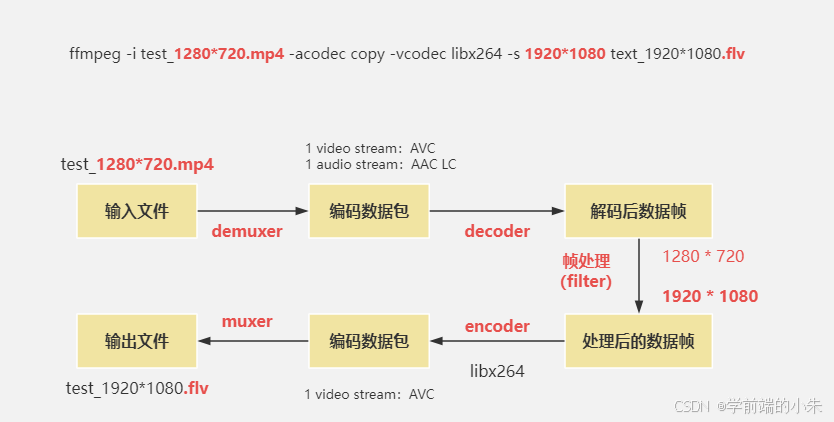
想掌握Python编程语言,从零基础的小白晋升为大神?没问题!接下来我们将以轻松有趣的方式,逐一解锁Python学习路上的99个关键知识点。每一步都将结合实际应用场景、函数功能解析及简洁代码演示,带你深度领略Python的魅力!
1. hello, world! - print() 函数,你的第一个问候,输出文本。
print("Hello, Python World!")
2. 变量小能手 - type() 和 str(),查看和转换数据类型。
x = 5
print(type(x)) # 输出 <class 'int'>
y = str(x) # 将整数转为字符串
3. 条件判断 - if、elif、else,让程序有逻辑。
age = 20
if age >= 18:
print("成年人")
4. 循环大法好 - for、while,重复执行任务。
for i in range(5):
print(i)
5. 列表造房子 - [] 和 append(), 创建并添加元素。
fruits = ["apple", "banana"]
fruits.append("orange")
6. 字典钥匙和门 - {} 和 keys(), 存储键值对。
person = {"name": "Alice", "age": 25}
print(person.keys())
7. 函数是魔法 - def,封装重复代码。
def greet(name):
return f"Hello, {name}!"
8. 异常处理 - try、except, 遇到错误不慌张。
try:
num = int("abc")
except ValueError:
print("这不是数字!")
9. 模块大援军 - import, 导入外部库增强功能。
import math
pi = math.pi
10. 字符串艺术 - split() 和 join(), 分割和组合文本。
words = "hello world".split()
print("-".join(words))
11. 文件操作入门 - open() 和 read(), 读写文件内容。
with open("file.txt", "r") as file:
content = file.read()
12. 列表推导式 - 列表生成器,简洁高效。
squares = [x**2 for x in range(10)]
print(squares)
13. 元组不可变 - () 和 tuple(), 安全存储不可变数据。
coordinates = (1, 2, 3)
print(coordinates[0]) # 输出 1
14. 集合的独特性 - {} 和 set(), 去重神器。
fruits = {"apple", "banana", "apple"}
unique_fruits = set(fruits)
print(unique_fruits)
15. 类与对象 - class, 创建自定义数据结构。
class Dog:
def __init__(self, name):
self.name = name
dog = Dog("Rex")
16. 装饰器魔法棒 - @decorator, 动态修改函数行为。
def my_decorator(func):
def wrapper():
print("Before function call")
func()
print("After function call")
return wrapper
@my_decorator
def say_hello():
print("Hello!")
say_hello()
17. 异常链追踪 - raise 和 try-except, 显示异常详情。
try:
raise ValueError("Custom error")
except ValueError as e:
print(e)
18. 迭代器解密 - iter() 和 next(), 遍历序列更轻量级。
numbers = [1, 2, 3]
iterator = iter(numbers)
print(next(iterator)) # 输出 1
19. lambda表达式 - 快速创建小型匿名函数。
double = lambda x: x * 2
print(double(5)) # 输出 10
20. 函数式编程 - map()、filter(), 高阶函数处理数据。
numbers = [1, 2, 3, 4, 5]
even_numbers =
list(filter(lambda x: x % 2 == 0, numbers))
print(even_numbers) # 输出 [2, 4]
21. 生成器表达式 - 动态生成值,节省内存。
even_gen = (x for x in range(10)
if x % 2 == 0)
print(next(even_gen)) # 输出 0
22. 内置函数大全 - len(), min(), max(), 功能强大。
string = "Python"
print(len(string)) # 输出 6
23. 字典的键值对操作 - keys(), values(), items(), 访问元素。
d = {"name": "Alice", "age": 25}
print(d["name"]) # 输出 "Alice"
24. 列表推导式优化 - 使用三元表达式简化条件。
numbers = [i for i in range(10)
if i % 2 == 0 or i % 3 == 0]
print(numbers)
25. 列表切片操作 - [start:end:step], 选择子序列。
fruits = ["apple", "banana", "cherry", "date"]
sliced_fruits = fruits[1:3]
print(sliced_fruits) # 输出 ["banana", "cherry"]
26. 面向对象继承 - class 和 super(), 复用已有功能。
class Animal:
def __init__(self, name):
self.name = name
class Dog(Animal):
def bark(self):
print(self.name + " says woof!")
dog = Dog("Rex")
dog.bark()
27. 异常处理实践 - finally 子句, 确保清理工作。
try:
file.close()
except Exception as e:
print("Error:", e)
finally:
print("File closed.")
28. 全局和局部变量 - 在函数内外区别变量。
global_var = "global"
def func():
local_var = "local"
print(local_var) # 输出 "local"
print(global_var) # 输出 "global"
func()
29. 模块导入优化 - 使用from ... import *, 但需谨慎。
from math
import sqrt
print(sqrt(16)) # 输出 4.0
30. 列表和元组的区别 - 元组不可变,列表可变。
t = (1, 2, 3) # 元组
l = [1, 2, 3] # 列表
l[0] = 0
print(l) # 输出 [0, 2, 3]
print(t) # 输出 (1, 2, 3), 元组不变
31. 列表解析与生成器表达式对比 - 生成器节省内存。
# 列表解析
even_numbers_list = [i for i in range(10) if i % 2 == 0]
# 生成器表达式
even_numbers_generator = (i for i in range(10) if i % 2 == 0)
print(list(even_numbers_generator)) # 输出相同,但生成器更节省内存
32. 函数参数传递 - pass by value vs pass by reference, 对象传递。
def change_list(lst):
lst.append(4)
original = [1, 2]
change_list(original)
print(original) # 输出 [1, 2, 4], 实际上是引用传递
33. 列表推导式与map()对比 - 列表推导简洁。
numbers = [1, 2, 3, 4]
squared_list = [x**2 for x in numbers]
squared_map = map(lambda x: x**2, numbers)
print(list(squared_map)) # 输出 [1, 4, 9, 16], 相同结果,但列表推导更易读
34. 迭代器和生成器的应用 - 节省内存和性能。
def infinite_sequence():
n = 0
while True:
yield n
n += 1
gen = infinite_sequence()
for _ in range(5):
print(next(gen)) # 输出前5个自然数
35. 装饰器高级用法 - 多装饰器链。
def infinite_s
def log_time(func):
def wrapper(*args, **kwargs):
start_time = time.time()
result = func(*args, **kwargs)
end_time = time.time()
print(f"{func.__name__} took {end_time - start_time} seconds.")
return result
return wrapper
@log_time
@count_calls
def fibonacci(n):
pass # 实现斐波那契数列
fibonacci(10)
36. 异常处理最佳实践 - 明确异常类型和处理。
def infinite_s
def safe_division(a, b):
try:
result = a / b
except ZeroDivisionError:
print("Can't divide by zero!")
result = None
return result
print(safe_division(10, 2)) # 输出 5
print(safe_division(10, 0)) # 输出 Can't divide by zero!
37. 类方法和静态方法 - @classmethod 和 @staticmethod, 提供不同访问权限。
def infinite_s
class MyClass:
@classmethod
def class_method(cls):
print(f"This is a class method, {cls}")
@staticmethod
def static_method():
print("This is a static method.")
MyClass.class_method() # 输出 This is a class method, MyClass
MyClass.static_method() # 输出 This is a static method.
38. 模块导入的别名 - 使用as关键字,简化导入。
def infinite_s
import math as m
print(m.pi) # 输出 π 的近似值
39. 字符串格式化 - 使用f-string或format(), 易于定制输出。
def infinite_s
name = "Alice"
age = 25
print(f"My name is {name}, and I am {age} years old.")
40. 列表推导式嵌套 - 多层次的数据处理。
def infinite_s
matrix = [[1, 2], [3, 4]]
transposed = [[row[i] for row in matrix] for i in range(2)]
print(transposed) # 输出 [[1, 3], [2, 4]]
41. 元组解包 - 交换变量值。
def infinite_s
a, b = 5, 10
a, b = b, a # 元组解包实现变量交换
print(a, b) # 输出 10, 5
42.列表推导式与列表生成式 - 生成器表达式节省内存。
def infinite_s
# 列表推导式
even_squares = [x**2 for x in range(10) if x % 2 == 0]
# 列表生成式
even_squares_gen = (x**2 for x in range(10) if x % 2 == 0)
print(list(even_squares_gen)) # 输出相同,但生成器更节省内存
43.字典的键冲突处理- 使用collections.defaultdict。
def infinite_s
from collections import defaultdict
counter = defaultdict(int)
counter["apple"] += 1
print(counter) # 输出 {"apple": 1}
44.列表和集合的区别- 列表有序,集合无序且不允许重复。
def infinite_s
fruits_list = ["apple", "banana", "apple"]
fruits_set = {"apple", "banana"}
print(fruits_list) # 输出 ["apple", "banana", "apple"]
print(fruits_set) # 输出 {"apple", "banana"}
45.函数返回多个值 - 使用元组或列表。
def infinite_s
def get_name_and_age():
return "Alice", 25
name, age = get_name_and_age()
print(name, age) # 输出 Alice 25
456列表推导式中的条件判断 - 更灵活的控制。
def infinite_s
odds = [x for x in range(10) if x % 2 != 0]
print(odds) # 输出 [1, 3, 5, 7, 9]
47.上下文管理器with - 自动关闭资源。
def infinite_s
with open("file.txt", "r") as file:
content = file.read()
print(content)
# 文件会在with语句结束后自动关闭
48.Python的魔术方法__str__ - 自定义对象的字符串表示。
def infinite_s
class Person:
def __str__(self):
return f"Person: {self.name}"
person = Person(name="Alice")
print(person) # 输出 Person: Alice
49.装饰器高级技巧 - 使用functools.wraps保持原函数信息。
from functools import wraps
def timer(func):
@wraps(func)
def wrapper(*args, **kwargs):
start_time = time.time()
result = func(*args, **kwargs)
end_time = time.time()
print(f"{func.__name__} took {end_time - start_time} seconds.")
return result
return wrapper
@timer
def my_function():
pass
my_function()
50.异常处理和try-except-finally - 控制流程的灵活性。
try:
div_by_zero = 10 / 0
except ZeroDivisionError:
print("Can't divide by zero!")
finally:
print("Execution completed.")
51.列表和数组比较- 列表通用,NumPy数组高效。
import numpy as np
normal_list = [1, 2, 3]
np_array = np.array([1, 2, 3])
print(np_array.shape) # 输出 (3,), 数组有形状信息
52.Python的内置模块datetime - 处理日期和时间。
from datetime import datetime
now = datetime.now()
print(now.strftime("%Y-%m-%d %H:%M:%S"))
53.Python的os模块 - 操作文件和目录。
import os
print(os.getcwd()) # 输出当前工作目录
54.列表推导式中的条件和循环 - 结合使用。
evens = [x
for x in range(10)
if x % 2 == 0
for y in range(5)
if y % 2 == 0]
print(evens)
55.迭代器和生成器的使用场景 - 数据处理和节省内存。
# 使用生成器处理大文件
def read_large_file(file_path, chunk_size=1024):
with open(file_path, "r") as file:
while True:
chunk = file.read(chunk_size)
if not chunk:
break
yield chunk
for line in read_large_file("large.txt"):
process(line)
56. zip()函数 - 同时遍历多个序列。
names = ["Alice", "Bob", "Charlie"]
ages = [25, 30, 35]
pairs = zip(names, ages)
print(list(pairs)) # 输出
[('Alice', 25), ('Bob', 30), ('Charlie', 35)]
57.enumerate()函数 - 为列表元素添加索引。
fruits = ["apple", "banana", "cherry"]
for index, fruit in enumerate(fruits):
print(f"{index}: {fruit}")
58.itertools模块 - 提供高效迭代工具。
from itertools
import product
result = product("ABC", repeat=2)
print(list(result)) # 输出
[('A', 'A'), ('A', 'B'), ('A', 'C'), ..., ('C', 'C')]
59.json模块 - 序列化和反序列化数据。
import json
data = {"name": "Alice", "age": 25}
json_data = json.dumps(data)
print(json_data)
60.递归函数 - 用于解决分治问题。
def factorial(n):
if n == 0 or n == 1:
return 1
else:
return n * factorial(n - 1)
print(factorial(5)) # 输出 120
61.os.path模块 - 文件路径处理。
import os.path
path = "/home/user/documents"
print(os.path.exists(path)) # 输出 True 或 False
62.random模块 - 随机数生成。
import random
random_number = random.randint(1, 10)
print(random_number)
63.re模块 - 正则表达式操作。
import re
text = "Today is 2023-04-01"
match = re.search(r"\d{4}-\d{2}-\d{2}", text)
print(match.group()) # 输出 "2023-04-01"
64. requests库 - 发送HTTP请求。
import requests
response = requests.get("https://api.example.com")
print(response.status_code)
65.Pandas库 - 大数据处理。
import pandas as pd
df = pd.DataFrame({"Name": ["Alice", "Bob"], "Age": [25, 30]})
print(df)
66.matplotlib库 - 数据可视化。
import matplotlib.pyplot as plt
plt.plot([1, 2, 3, 4])
plt.show()
67. logging模块 - 日志记录。
import logging
logger = logging.getLogger(__name__)
logger.info("This is an info message")
68. asyncio库 异步编程。
import asyncio
async def slow_task():
await asyncio.sleep(1)
return "Task completed"
loop = asyncio.get_event_loop()
result = loop.run_until_complete(slow_task())
print(result)
69.contextlib模块 非阻塞上下文管理。
from contextlib import asynccontextmanager
@asynccontextmanager
async def acquire_lock(lock):
async with lock:
yield
async with acquire_lock(lock):
# do something
70.**asyncio.gather**异步并发执行。
tasks = [asyncio.create_task(task)
for task in tasks_to_run]
results =
await asyncio.gather(*tasks)
71.asyncio.sleep 异步等待一段时间。
await asyncio.sleep(2) # 程序在此暂停2秒
72.asyncio.wait 等待多个任务完成。
done, pending =
await asyncio.wait(tasks, timeout=10)
73. asyncio.subprocess 异步执行外部命令。
import asyncio.subprocess
as sp
proc =
await sp.create_subprocess_exec("ls", "-l")
await proc.communicate()
74. concurrent.futures库 多线程/进程执行。
from concurrent.futures
import ThreadPoolExecutor, ProcessPoolExecutor
with ThreadPoolExecutor()
as executor:
results = executor.map(function, arguments)
75.timeit模块 测试代码执行速度。
import timeit
print(timeit.timeit("your_code_here", globals=globals()))
76.pickle模块 - 序列化和反序列化对象。
import pickle
serialized = pickle.dumps(obj)
deserialized = pickle.loads(serialized)
77. logging.handlers模块多种日志输出方式。
handler = RotatingFileHandler("app.log", maxBytes=1000000)
formatter = logging.Formatter("%(asctime)s - %(levelname)s - %(message)s")
handler.setFormatter(formatter)
logger.addHandler(handler)
78.asyncio.Queue 异步队列。
queue = asyncio.Queue()
await queue.put(item)
result =
await queue.get()
79. asyncio.Event 异步信号量。
event = asyncio.Event()
event.set() # 设置信号
await event.wait() # 等待信号
80.asyncio.Lock 互斥锁,防止并发修改。
async with await asyncio.Lock(): # 获取锁后执行
critical_section()
81.asyncio.gather和asyncio.wait_for的区别异步任务管理。
gather: 并行执行多个任务,等待所有任务完成。wait_for: 等待单个任务完成,其他任务继续运行。
82.asyncio.sleep和asyncio.sleep_after 异步延时和定时任务。
sleep: 直接暂停当前协程。sleep_after: 定义一个延迟后执行的任务。
83. aiohttp库 - HTTP客户端库。
import aiohttp
async with aiohttp.ClientSession() as session:
async with session.get("https://example.com") as response:
data = await response.text()
84. asyncio.shield防止被取消任务中断。
async def task():
await shield(some_long_running_task())
# 如果外部取消任务,task将继续运行,不会影响内部任务
asyncio.create_task(task())
85. asyncio.run`简化异步程序执行。
asyncio.run(main_coroutine())
86. asyncio.iscoroutinefunction检查是否为协程函数。
if asyncio.iscoroutinefunction(some_function):
await some_function()
87. asyncio.all_tasks 获取所有任务。
tasks = asyncio.all_tasks()
for task in tasks:
task.cancel()
88. asyncio.wait_for和asyncio.timeout 设置超时限制。
try:
result = await asyncio.wait_for(some_task, timeout=5.0)
except asyncio.TimeoutError:
print("Task timed out")
89.asyncio.sleep_timeout 异步睡眠并设置超时。
await asyncio.sleep_timeout(10, asyncio.TimeoutError)
90. asyncio.current_task 获取当前正在执行的任务。
current_task = asyncio.current_task()
print(current_task)
91. asyncio.sleep的超时支持 asyncio.sleep现在接受超时参数。
try:
await asyncio.sleep(1, timeout=0.5) # 如果超过0.5秒还没完成,则会抛出TimeoutError
except asyncio.TimeoutError:
print("Sleep interrupted")
92.asyncio.shield的高级用法 可以保护整个协程。
@asyncio.coroutine
def protected_coroutine():
try:
await some_task()
except Exception as e:
print(f"Error occurred: {e}")
# 使用shield保护,即使外部取消任务,也会继续处理错误
asyncio.create_task(protected_coroutine())
93. asyncio.wait的回调函数 使用回调函数处理完成任务。
done, _ = await asyncio.wait(tasks, callback=handle_completed_task)
94. asyncio.gather的返回值 可以获取所有任务的结果。
results = await asyncio.gather(*tasks)
95. asyncio.Queue的get_nowait 不阻塞获取队列元素。
if not queue.empty():
item = queue.get_nowait()
else:
item = await queue.get()
96.asyncio.Event的clear清除事件状态。
event.clear()
await event.wait() # 现在需要再次调用set()来触发
97.asyncio.Event的is_set检查事件是否已设置。
if event.is_set():
print("Event is set")
98.asyncio.subprocess.PIPE 连接到子进程的输入/输出管道。
proc = await asyncio.create_subprocess_exec(
"python", "-c", "print('Hello from child')", stdout=asyncio.subprocess.PIPE )
output, _ = await proc.communicate()
print(output.decode())
99.asyncio.run_coroutine_threadsafe 在子线程中执行协程。
loop = asyncio.get_running_loop()
future = loop.run_coroutine_threadsafe(some_async_coroutine(), thread_pool)
result = await future.result()

总结
- 最后希望你编程学习上不急不躁,按照计划有条不紊推进,把任何一件事做到极致,都是不容易的,加油,努力!相信自己!
文末福利
- 最后这里免费分享给大家一份Python全套学习资料,希望能帮到那些不满现状,想提升自己却又没有方向的朋友,也可以和我一起来学习交流呀。
包含编程资料、学习路线图、源代码、软件安装包等!【[点击这里]】领取!
- ① Python所有方向的学习路线图,清楚各个方向要学什么东西
- ② 100多节Python课程视频,涵盖必备基础、爬虫和数据分析
- ③ 100多个Python实战案例,学习不再是只会理论
- ④ 华为出品独家Python漫画教程,手机也能学习
可以扫描下方二维码领取【保证100%免费】



















